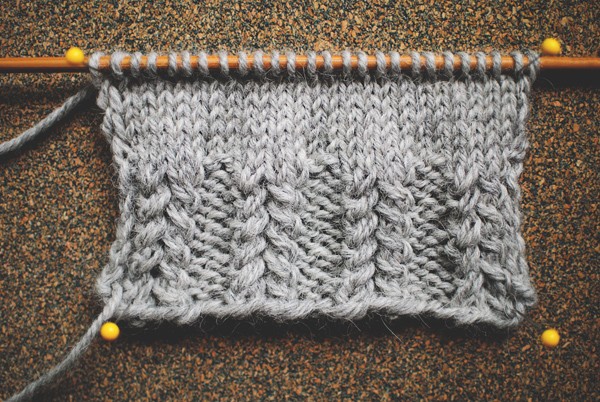
Tiny sea life puzzles
It's a great way to get creative and improve communication skills. Each puzzle has a sea creature figure and the matching puzzle pieces. Children can match the pieces with a storybook page or a picture to complete the puzzle, or trace the animal figurines on paper for free play. The pieces can be made from recycled wood or organic pigments.
The Mudpuppy Store has many puzzles for every age and interest. A marine-themed gift is perfect for any child who loves the ocean. These puzzles combine colorful pieces with artistic blending. These puzzles can be used to teach children about colors and shapes. You can find puzzles that appeal to your child's imagination from more than 40 marine species.
These small sea life puzzles have vivid colors and colorful artwork. Bright coral and tropical fish are found at the bottom of this puzzle. The top of the puzzle features green plants. The center of the puzzle has a border, and a final section. The colors are amazing! These puzzles were designed to be fun, so you can spend quality family time together.
You can find tiny sealife puzzles in many sizes. Hundreds of pieces are included, and the finished picture is less than one square foot. As you build the picture, you will be rewarded with many enjoyable moments. And the pieces are glare-free for easy vision.

100-piece jigsaw scene of the ocean
SunsOut's 100 piece jigsaw ocean puzzle will appeal to all types of puzzlers. This puzzle shows a scene with tropical fish swimming in deep blue waters. You will also find sea urchins and turtles. It is designed to be a challenging game that fosters hand-eye coordination and fine motor skills. It will also stimulate creativity and promote problem solving.
FAQ
What are competitive hobbies?
There are many competitive sports, including running, swimming and cycling, as well as golfing, tennis and other activities.
They're often enjoyed by people who are active and want to socialize.
If you have a hobby that involves physical activity, then you'll probably find that there are other people around who share this interest.
You might consider joining a group or club that meets regularly to play together in sports.
You could also opt to take part in team games that involve playing alongside others.
These include football (soccer), cricket, rugby, netball, basketball, hockey, baseball, volleyball, badminton, squash, handball, and table tennis.
There are many types competition.
Some competitions are organized for purely recreational purposes.
Others are intended to test competitors' skill.
Other rewards are available to recognize exceptional performance.
In these cases, winners receive prizes.
Other competitions test strength and endurance.
These are called endurance events.
For example, marathon races, triathlons, Ironman Triathlon, etc.
Before participating in these events, athletes often train hard.
They will adhere to a strict training program that prepares them mentally as well as physically.
They might also need to be away from their homes during preparation.
It's important to remember that not all athletes compete in every type of event.
Why do we require hobbies?
Hobbies are a vital part of our lives as they allow us to unwind, relax, think creatively and exercise. They also give us the opportunity to socialize, network, and have fun. Hobbies offer opportunities to develop new skills as well as life-long interests.
Hobbies give us meaning and purpose in life.
They can be a great way of spending time without having to do anything else.
They are fun!
If you don’t have the time to do a hobby, you likely don’t have any other hobbies.
Look at all the options. Perhaps you should get a hobby started today if you don’t already have one.
What are educational hobbies, you ask?
An educational hobby is a activity that allows you to learn by doing it. This could include anything from learning to play an instrument to playing sports.
The key thing is that it should be fun and enjoyable for you. It doesn't have to be done all the time. However, if you get bored of it, you should think about other things you can do instead.
You also want to ensure you're not spending too much on these activities because they can end up costing you more than they're worth.
What are your favorite hobbies right now
Popularity is not always a good thing. It is often used to excuse mediocrity. Most people don’t have the time to pursue any hobbies they desire. They're too busy working to make ends met. What should you do when you don't have much time? You could start your own company.
It's not easy. It takes a lot of work to make your dream a reality.
So if you're looking for something more exciting than running a business, you should consider pursuing a hobby.
Hobbies are not limited to creative pursuits. There are many kinds of hobbies. These hobbies include:
-
Gardening
-
Cooking
-
Photography
-
Reading
Where can you find free resources that teach more about hobbies and interests?
Many websites offer help in finding new hobbies.
These are our top picks:
www.trythisathome.com - This site provides a list of over 100 different hobbies. It also includes information on how to get started on each one.
www.hobbyfinders.org: This website offers thousands of activities you can search by skill level, location, or interest.
www.indiebazaar.co.uk - IndieBazaar is an online marketplace designed specifically for independent artists and musicians. The site has hundreds of products, from artwork to music equipment.
www.pinterest.com/explore/hobbies - Pinterest is a social media network that lets users "pin" images they find interesting onto their boards. Boards let users organize what they like into particular categories.
www.reddit.com/r/Hobbies: Reddit, another social media platform, allows users to post links to articles and videos. Users can vote on which posts they think are most valuable.
Statistics
- Much of this decline reflects the fact that teens are less likely to work today than in the past; among employed teens, the amount of time spent working is not much different now than it was around 2005. (pewresearch.org)
- A new survey by Pew Research Center of teens ages 13 to 17 finds that 36% of girls feel tense or nervous about their day every day; 23% of boys say the same. (pewresearch.org)
- I am 100% biologically a woman (discover.hubpages.com)
- Studies show that just six minutes of reading can reduce stress levels by 60 percent. (oberlo.com)
- This 100% accurate personality-analyzing hobby quiz discovers your passion based on your characteristics. (quizexpo.com)
External Links
How To
How to start gardening
Gardening is one the oldest forms. It requires persistence, patience, and determination. You must choose a suitable location to start your garden. You can choose to have a large area or a small one in your backyard. Next, select the kind of plants that are most appealing to you. Do you prefer vegetables, or flowers? Some people are passionate about growing herbs, while others like raising livestock like rabbits. Before you decide on the type of crops you want to plant, it is important to consider the space available. If you live in a climate that experiences cold winters, then you might decide to grow fruits or berries as they do well in colder climates.
Once you have made your choice, it is time to prepare the soil. The soil is crucial in determining whether your plants thrive or not. Organic matter is essential for the health and well-being of your plants. Organic matter includes organic matter such as leaves, twigs or grass clippings. Once your soil is prepared, it's time to add nutrients. You may need different amounts depending on what type of plants you are trying to grow. To determine these values, you can use a fertilizer calculator online. There are many fertilizers on the market, so ensure you understand what you are buying.
Now, wait for your seeds to germinate after you have prepared your soil and added the necessary nutrients. The process typically takes 2 to 3 weeks depending on the weather conditions and temperature in your area. After seeds have sprouted, water them every day. Watering your plants too little or too often can cause problems. Ensure you give your plants enough water at regular intervals and avoid overwatering. Overwatering can cause root rot or fungal diseases. Keep in mind that plants are more thirsty during summer than winter. You should also remember that some plants will need to dry out once they have been watered. Tomatoes for instance need to remain slightly moist, but not wet. They are not happy to be in soggy soil. After the plants have finished flowering they must go dormant. When plants stop producing new growth, they go dormant and start storing energy for next season's harvest. Dormancy means that the plant stops communicating with its roots about producing food. Throughout this time, plants can store energy. The plant will eventually die if it is not given enough sunlight or temperatures below freezing.
Urban environments may limit the variety of plants you can grow. Concrete sidewalks, roads, buildings and parking lots are all common in urban areas. These blocks block sunlight from reaching ground level. Concrete absorbs light and prevents soil below from getting sufficient sun exposure. Many plants are unable to survive in urban areas due to the lack of sunlight. There are still plants that thrive in urban environments. Many trees, shrubs, perennials, and other plants can adapt to urban life. Many annuals are also possible to grow indoors in containers. You can grow fresh greenery year-round in containers.
You are now ready for planting!